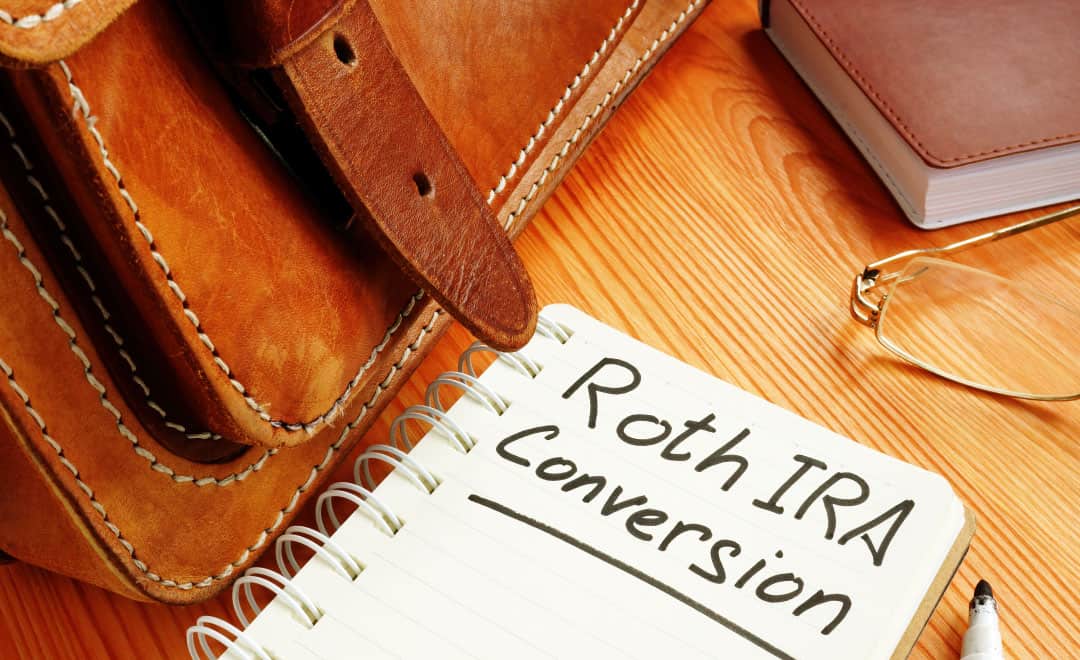We previously wrote on the expansion and extension of the 60-day rollover rule through IRS notice 2020-51, which effectively allows anyone who took an unwanted Required Minimum Distribution (RMD) to redeposit that money back into their retirement plan account by Aug. 31, 2020. As was brought to our attention by a “Money Talks” listener, we failed to mention another option that may be useful to consider depending on your circumstances, which is to use the 60-day rollover provision to convert these IRA funds to a Roth IRA.
As a rule, individuals who are required to distribute funds from their pre-tax, traditional IRA, or other retirement plans, must first distribute the funds to a regular after-tax account before converting the assets to an after-tax Roth IRA. For example, if you had a $50,000 RMD, and you wanted to convert $50,000 to a Roth IRA, you would have to distribute $50,000 to a regular after-tax account to satisfy your RMD, and then move an additional $50,000 to a Roth IRA as a conversion, recognizing a total of $100,000 in income during that year. The CARES Act RMD waiver for 2020 provides an opportunity to either convert more to your Roth for the same amount of income ($100,000 to Roth instead of $50,000) or convert the same amount to your Roth for a reduced amount of income ($50,000 to Roth and recognize only $50,000 in income).
According to the IRS, one method for converting funds to a Roth IRA includes the 60-day, indirect rollover method. In other words, you receive a distribution from your IRA to an after-tax account, and then you deposit those funds to a Roth IRA within 60-days. Given the extension of the 60-day rollover period per IRS notice 2020-51, our interpretation is that you could deposit those funds into a Roth IRA by the extended deadline of Aug. 31, 2020, instead of re-depositing back into the traditional IRA.
The caveat here, based on our interpretation of the rule, is that this would count as a rollover under the once-per-year rule, so if you have done another 60-day rollover within the previous 12-months, you would be unable to convert under this method. Notice 2020-51 also specifies that the extension of the 60-day rule only applies to distributions that would have otherwise been considered an RMD if not for the CARES Act waiver. So, if you distributed $100,000 from the traditional IRA and your RMD was only $50,000, only the $50,000 that would have otherwise been considered an RMD could be rolled into the Roth IRA.
If you have already rolled your 2020 RMD back into the traditional IRA, or you are worried about violating the once-per-year rule by converting to a Roth using the above method, you still have an opportunity to get funds into the Roth for 2020. There is no limit to income, amount, or number of Roth conversions you can make in a given year. Simply request to initiate a trustee-to-trustee transfer or a same-trustee transfer, in which you are never taking possession of the funds. Instead, the check or transfer of assets is payable to the custodian or trustee of the Roth IRA for your benefit.
As always, you should discuss your situation with your financial adviser or CPA before making any moves to help ensure you don’t encounter any undesirable tax consequences. If you have questions on converting a 2020 RMD withdrawal to a Roth IRA, the experts at Henssler Financial will be glad to help:
- Experts Request Form
- Email: experts@henssler.com
- Phone: 770-429-9166








